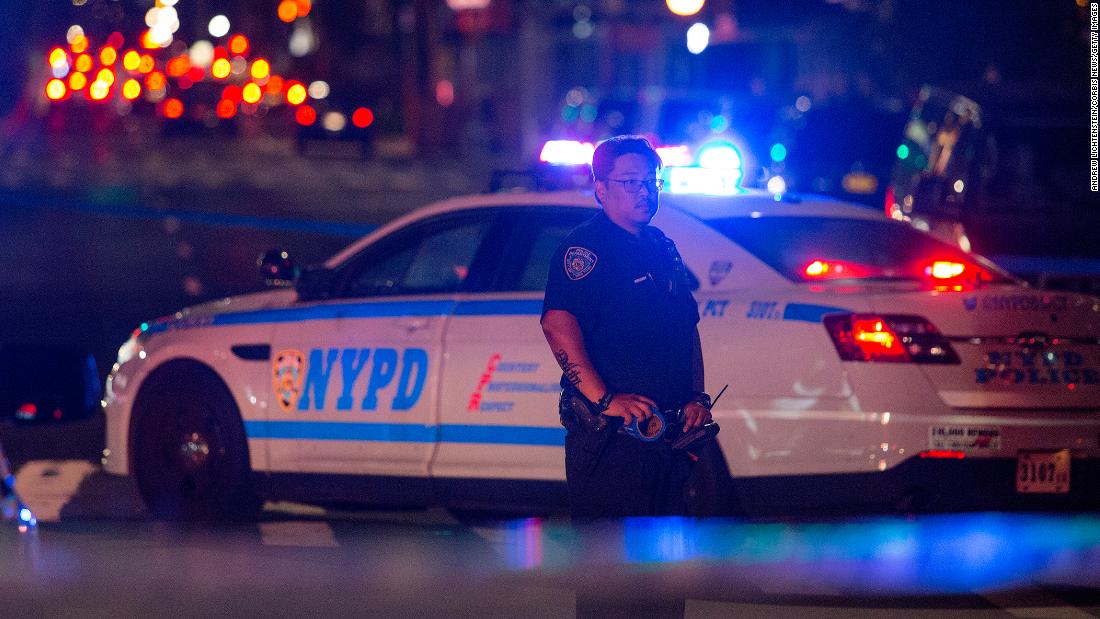Historic Growth in the US Homicide Rate 0:40
(CNN) - The
United States just recorded its largest increase in homicide rates in modern history, according to the US Centers for Disease Control and Prevention (CDC).
Interim data from the CDC's National Center for Health Statistics (NHCS), released early Wednesday, suggests that the homicide rate in the United States increased 30% between 2019 and 2020. It is the largest increase. high recorded in modern history, and confirms through public health data an increase in homicides that until now had only been identified through crime statistics.
The largest previous increase in the homicide rate in the United States had been a 20% increase recorded between 2000 and 2001 due to the terrorist attacks of September 11, according to the NCHS.
"It's the biggest increase in 100 years," said Robert Anderson, chief of the mortality statistics branch at the NCHS.
Homicides in the United States increased dramatically in 2020, but data is lacking in much of the country, according to an FBI report
"The only major increase since we have been recording this data occurred between 1904 and 1905, and that increase was probably, at least in part, the result of better reporting," Anderson told CNN.
"States were added to what we call death registration areas, so we count deaths in more areas over time. Not all states reported until 1933."
The new data shows that the homicide rate in the U.S. increased from about 6 homicides per 100,000 people in 2019 to 7.8 per 100,000 in 2020, according to NCHS.
Researchers at the center noted that the homicide rate of 7.8 in 2020 is the highest on record in the United States since 1995, but is still significantly lower than rates in the early 1980s, which exceeded 10 homicides per every 100,000 people.
"So it's obviously worrying, but we're not at the levels we were at that time," Anderson said.
"However, we are going in the wrong direction, certainly."
While the initial release of preliminary NCHS data did not provide a total number of homicides for 2020, the FBI's Uniform Crime Report recorded about 21,570 total murders last year, compared to an estimated 16,425 murders in 2019.
NCHS investigators plan to conduct follow-up analyzes of the new homicide data to learn more about the statewide data and how the homicides occurred.
For example, the interim data does not document the various homicide mechanisms, but the researchers noted that interim data on gun-related deaths also increased last year, from a rate of 11.9 firearm deaths per 100,000 in 2019 to 13.6 per 100,000 in 2020, an increase of 14%.
When it comes to data differences between states, Anderson said that only three states appeared to have experienced a decrease in homicides in the past year: Maine, New Mexico and Alaska.
US Hate Crime Reports Rise to Highest Level in 12 Years, FBI Says
"Those are really the only states where we saw declines," Anderson said.
In general, the provisional homicide data is consistent with separate findings from the Federal Bureau of Investigation.
Last month, the FBI released its Uniform Crime Report for 2020, which shows that the number of homicides increased nearly 30% since 2019, the largest increase in a year the agency has recorded since it began tracking these crimes in the 1960s.
America's rising murder rate is a worrying threat to the nation's public health, but it's not surprising, Dr. Georges Benjamin, executive director of the American Public Health Association, told CNN.
He said the increase in homicides has come in parallel with a recent increase in general violence, hatred, tensions, political divisions and anger that is manifesting in communities across the country.
"We are literally seeing it in front of our eyes, at school board meetings and at public events," Benjamin said.
"People seem to have lost all courtesy, and then it combines with having to stay home and being stressed out about it, losing their job, losing resources, fear for their health, more guns," he said.
"I think we have to figure out how to eliminate conflict with our society."
Earlier this year, criminology experts told CNN that the increase in homicides was due to several factors.
The pandemic closed schools and businesses, leading to unemployment.
This meant that unemployed children and adults were trapped at home, causing soaring levels of stress and anxiety, especially in low-income households.
Guns can now be carried openly in public in Texas without a permit or training.
Police say the new law makes their job difficult
The pandemic also changed the way police officers do their jobs - due to illness and social distancing - which in turn led to fewer officers on the streets in areas most in need of crime prevention. .
"I think covid was the last straw," Eddie Bocanegra, senior director of Readi Chicago, a program that seeks to help those most affected by gun violence, said in January.
"It's almost as if these communities had their heads above water," Bocanegra said, "and then the covid hit and they just sank."
HomicidesInstaNews

